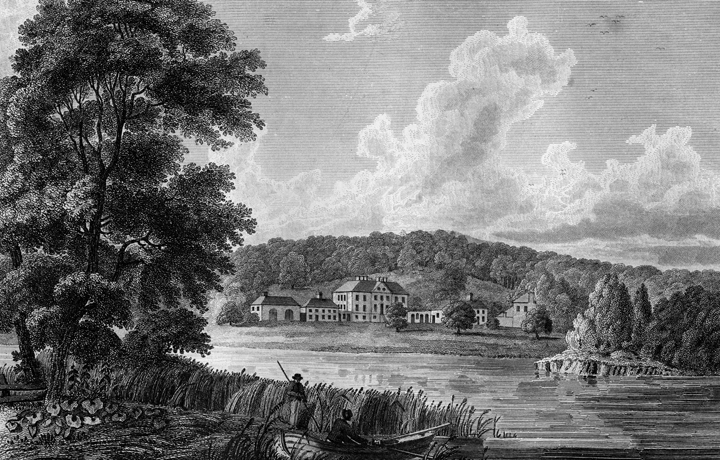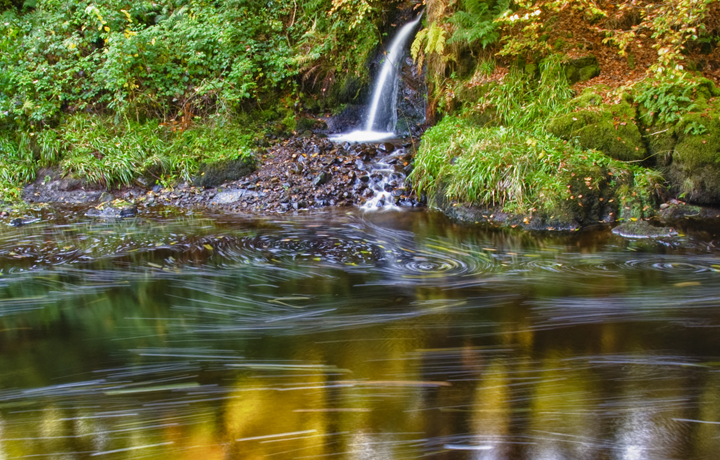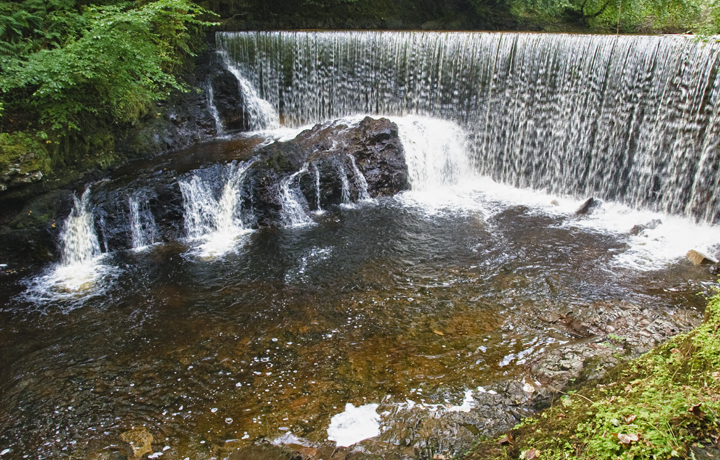Lochwinnoch
Alexander Wilson arrived in Lochwinnoch at some point in the early-mid 1780s. Having served his time as an apprentice weaver by 1782 and spent a while at Auchenbathie until, as related, he was compelled to leave. His father had moved there in 1783 and had a few weavers working for him (Hunter, 1983).

Engraving of Castle Semple, Lochwinnoch; from Ramsay’s “Views in Renfrewshire”, 1825.
From the Cairn of Lochwinnoch Hunter reports that Wilson spent at least 18 months as a journeyman weaver at Lochwinnoch. Henderson (1844) states he was there for two years. He would have moved between Lochwinnoch and Paisley and latterly, Queensferry, to where his master, William Duncan, later moved. He worked in Matthew Barr’s shop known as the “Dowcot” or Dove Cote; the looms were on the ground floor with living quarters above. His pirn-winder – the person who wound the yarn onto the shuttle bobbin was Peggy Orr (Hunter) who adds that there appeared to have been a clan of Orrs in Lochwinnoch. From his early poems one does gather the impression that he was very fond of Lochwinnoch. The river Calder, its banks and glen, were the subject of certain of his poems and are mentioned in others. Henderson writes that Lochwinnoch was his favourite village while Hunter refers to Wilson’s favourite walk as going up Calder Glen.

A Pool on the River Calder, Calder Glen, by Lochwinnoch.
Burns (1910) reports that by about 1786, Wilson who disliked weaving as an occupation, had become a packman and was travelling through south-eastern Scotland on foot. According to Henderson he accompanied William Duncan.

Weir on the River Calder, Calder Glen, by Lochwinnoch.
